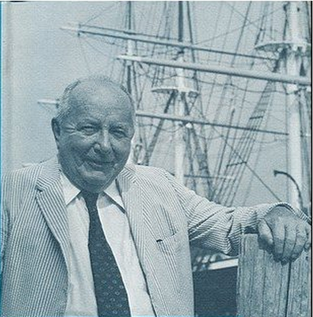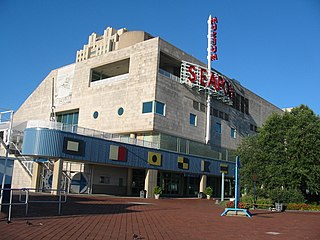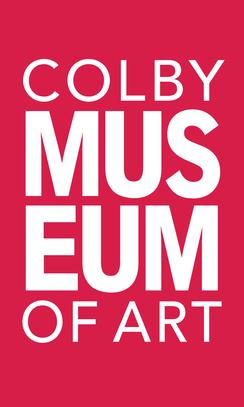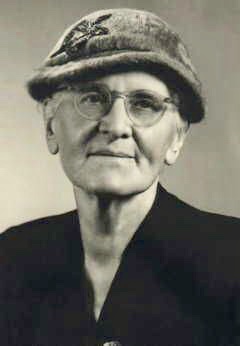
Greenport is a village in New York's Suffolk County, on the North Fork of Long Island. It is located within the Town of Southold and is the only incorporated community in the town. The population was 2,197 at the 2010 census.

A maritime museum is a museum specializing in the display of objects relating to ships and travel on large bodies of water. A subcategory of maritime museums are naval museums, which focus on navies and the military use of the sea.

The South Street Seaport is a historic area in the New York City borough of Manhattan, centered where Fulton Street meets the East River, within the Financial District of Lower Manhattan. The Seaport is a designated historic district. It is part of Manhattan Community Board 1 in Lower Manhattan, and is next to the East River to the southeast and the Two Bridges neighborhood to the northeast.
Kenneth T. Jackson is an urban, social, cultural historian, author, and academic. He is the Jacques Barzun Professor Emeritus of History at Columbia University, where he has also chaired the Department of History.

Alan Shaw Taylor is an American historian and scholar who is the Thomas Jefferson Memorial Foundation Professor of History at the University of Virginia. A specialist in the early history of the United States, Taylor has written extensively about the colonial history of the United States, the American Revolution, and the early American Republic. Taylor has received two Pulitzer Prizes and the Bancroft Prize, and was also a finalist for the National Book Award for non-fiction. In 2020 he was elected to the American Philosophical Society.

Robert Greenhalgh Albion was Harvard's first professor of Oceanic History and inspired two generations of maritime historians in the United States.
Williams–Mystic, the Ocean and Coastal Studies Semester of Williams College and Mystic Seaport Museum, is an interdisciplinary semester program based at the Mystic Seaport Museum in Mystic, Connecticut.
Elizabeth "Betsy" Sholl is an American poet who was poet laureate of Maine from 2006 to 2011 and has authored nine collections of poetry. Sholl has received several poetry awards, including the 1991 AWP Award, and the 2015 Maine Literary Award, as well as receiving fellowships from the National Endowment for the Arts and the Maine Arts Commission.

The Independence Seaport Museum was founded in 1961 and is located in the Penn's Landing complex along the Delaware River in Philadelphia, Pennsylvania. The collections at the Independence Seaport Museum document maritime history and culture along the Delaware River. At the museum are two National Historic Landmark ships and the J. Welles Henderson Archives and Library.

The Titanic Memorial is a 60-foot-tall (18 m) lighthouse at Fulton and Pearl Streets in the Financial District of Lower Manhattan in New York City. It was built, in part at the instigation of Margaret Brown, to remember the people who died on the RMS Titanic on April 15, 1912. Its design incorporates the use of a time ball.

Joan Druett is a New Zealand historian and novelist, specialising in maritime history and crime fiction.
Rachel Zucker is an American poet born in New York City in 1971. She is the author of five collections of poetry, most recently, SoundMachine. She also co-edited the book Women Poets on Mentorship: Efforts and Affections with fellow poet, Arielle Greenberg.

John Pierce Rousmaniere is an American writer and author of 30 historical. technical, and instructional books on sailing, yachting history, New York history, business history, and the histories of clubs, businesses, and other organizations. An authority on seamanship and boating safety, he has conducted tests of equipment and sailing skills and led or participated in fact-finding inquiries into boating accidents. He has been presented with several awards for his writing and his contributions to boating safety and seamanship.

Bicycling is a cycling magazine published by Hearst in Easton, Pennsylvania.

The Colby College Museum of Art is an art museum on the campus of Colby College in Waterville, Maine. Founded in 1959 and now comprising five wings, nearly 8,000 works and more than 38,000 square feet of exhibition space, the Colby College Museum of Art has built a collection that specializes in American and contemporary art with additional, select collections of Chinese antiquities and European paintings and works on paper. The museum serves as a teaching resource for Colby College and is a major cultural destination for the residents of Maine and visitors to the state.

Joanna Carver Colcord was pioneering social worker, and author. Born at sea, she was also notable for publishing texts on the language, work songs, and sea shanties of American seamen during the early 20th century.

The Moses H. Grinnell was a 19th-century pilot boat built in 1850 for the New York maritime pilots. She was designed by the yacht designer George Steers. The Grinnell was the first pilot boat to feature a fully developed concave clipper-bow, which was to become the New York schooner-rigged pilot boat's trade mark. This new design was the basis for the celebrated yacht America.

The Harvey Gamage is a 131' gaff rigged schooner launched in 1973 from the Harvey F. Gamage Shipyard in South Bristol, Maine. She was designed by McCurdy & Rhodes, Naval Architects in Cold Spring Harbor, New York and Frederick W. Bates of Damariscotta, Maine. She is a USCG inspected vessel both as a passenger vessel and a sail training vessel. As governments of maritime countries recognise Sail Training as an essential component of developing and maintaining an essential merchant marine force, the US Congress created a special service category of vessel for Sail Training and the Harvey Gamage is one of a handful of vessels licensed for this service. She has been educating students at sea along the east coast of North American almost continuously since her launch. She has 14 staterooms accommodating 39 people, including 9 professional crew, 22 youth sail trainees and up to 4 adult chaperones. As a training vessel, she takes crews of students along the eastern seaboard, from her home port in Maine to various destinations ranging from The Maritimes to the Caribbean














